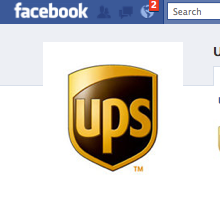“The information about a package is becoming as important as the package itself.” — Oz Nelson, ex UPS-CEO
If anyone can track something, one would hope UPS could. With that in mind, the company set out to recruit using social media and track the heck out of it.
It built jobs communities on Facebook and Twitter, and used those to better explain to employees and recruits what it’s like to work for UPS. Then, it measured how engaged those community users were, and whether they became employees.
![]() All this was spelled out by Mike Vangel, who’s the VP of client strategy at TMP, UPS’s agency. Vangel’s talk came at today’s #socialrecruiting summit at the sprawling Microsoft campus in Redmond.
All this was spelled out by Mike Vangel, who’s the VP of client strategy at TMP, UPS’s agency. Vangel’s talk came at today’s #socialrecruiting summit at the sprawling Microsoft campus in Redmond.
Though tracking is in UPS’s DNA, that doesn’t mean social media was a natural for the company, which has traditionally banned the use of Facebook at work. But, things are changing.
The company launched a Facebook page for careers in early October of 2009. By the end of 2009, there were 1,885 fans of the page, without, Vangel notes, spending money on paid media.
Of course, a fan is not an applicant, or a hire. But to start with, UPS was able to get demographic information, such as that 78% of its audience was 18-44. And the data told UPS where people lived (93% from the U.S.). Basically, the early data, without hires, determined that at least this movement into Facebook as a recruiting tool was generally on the right track.
Meanwhile, Vangel says, UPS measured its cost: $7,500 to develop its Twitter page, and $7,500 for its Facebook page. Vangel breaks those numbers down by followers ($5.71 per Twitter follower) and leads and tweets and so on.
Then, as time goes on, it is measuring the payoff. UPS and TMP captured (using both Google Analytics, as well as UPS’s talent acquisition system) data on social media visitors who applied for UPS jobs, as well as, of course, hires. They measured how many people clicked from social media to an “apply now” landing page, how many created an application, how many completed one, how many were interviewed, and were hired. The upshot is that there is twice as high of a conversion ratio of created applications to hires from Facebook and Twitter compared to all other online media. The interview/hire ratio is 2:1.
“Obviously what I want to work on (now) is scale,” Vangel says.
What he means here is that social media is paying off greatly in ROI, but that doesn’t mean it’s generated a huge volume of hires yet.
 UPS won a number of awards for social media and got attention in the Wall Street Journal and in places like job-hunt.org, which listed the top 50 employers using Twitter to recruit. It also ranks high on Twittergrader and Twinfluence. Twittergrader has a formula showing your influence using a long list of factors, while Twinfluence measures the number of followers the people who follow you have.
UPS won a number of awards for social media and got attention in the Wall Street Journal and in places like job-hunt.org, which listed the top 50 employers using Twitter to recruit. It also ranks high on Twittergrader and Twinfluence. Twittergrader has a formula showing your influence using a long list of factors, while Twinfluence measures the number of followers the people who follow you have.
So, in a sense, Twinfluence is a measure of who you’re reaching, sort of like People magazine measuring not just how many people subscribe to it, but how many people, on average, each passes it along to. UPS’s jobs page on Twitter now has almost 3,000 Twitter followers, and UPS and TMP use the page not just to blast out jobs but to provide interesting business information, sometimes on UPS philanthropic work or other topics.
Vangel notes that Twitter “tends to have a lot of people talking, but necessarily a lot of people listening.” In other words, if you’re looking to have a “conversation” with a candidate, maybe Facebook is your place for that kind of engagement. As for Facebook, the UPS job-application landing page originating from Facebook had 18,485 page views from October 1, 2009 to August 27, 2010. The average time viewed was 3 minutes, 28 seconds.
Beyond Twitter and Facebook, TMP and UPS continue to expand these social media recruiting efforts. A mobile platform, www.UPSjobs.mobi, launched in August, which, Vangel says, is averaging 5,400 visits weekly. It generated four hires in a couple of weeks and 10 so far overall. Also, Vangel says he did a TweetMyJOBS trial during the month of August, though Vangel says the “jury’s still out” on whether it’s something UPS will stick with in the long run.

Awareness, Influence, Action
TMP’s Louis Vong suggests three things for companies to consider when measuring the success of their social media recruiting:
- Awareness (who is talking about you?). This you can find out by measuring impressions/traffic on blogs and video, as well as tweets, posts, and social bookmarks.
- Influence (what are they saying about you?). You’d measure this by counting positive/negative opinions, perceptions, and attitudes.
- Action (what does it mean to your business?). Here, you’d track site visits, applications, hires, referrals, leads, and fans.